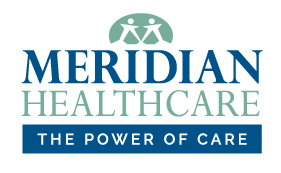Physician Assistant vs Nurse Practitioner: Know Who’s Who in Healthcare
It can be hard to know the differences between all the various roles in the medical field. Nurse practitioners (NPs) and Physician Assistants (PAs) seem similar enough to cause confusion if you’re not a healthcare professional. They do many of the same things for the patient population, but their career path is slightly different, including their education, what they can do, and where they can do it.
So, physician assistant vs. nurse practitioner: what’s the difference and who should you see?
Key Differences Between Nurse Practitioners and Physician Assistants
There’s a lot of overlap in patient care between NPs and PAs. Both take medical histories from patients, perform physical exams, and design and handle your treatment plan. While they share these duties, they do have differences that begin as early as their education.
Medical Education and Coursework for NPs
Nurse practitioners begin by following the nursing model of education. They begin their career by attending a nursing education program to become registered nurses (RNs) and earn a Bachelor of Science in Nursing.
After receiving their RN license, they pursue a Master of Science in Nursing (MSN) and some go on after receiving their master’s degree to get a Doctor of Nursing Practice (DNP) degree. While enrolled in their master’s nursing program, they complete 600 hours of supervised clinical practice and 1,000 clinical hours for a doctorate.
Medical Education and Coursework for PAs
Physician assistants begin by receiving a bachelor’s degree. Typically, physician assistant studies are similar to those of doctors and follow the medical model. They often have a strong focus on anatomy, biology, chemistry, and physiology before they enter a graduate degree program.
After receiving a bachelor’s degree, they enroll in an accredited physician assistant program to receive a Master of Science in Physician Studies (MSPAS). This degree follows a medical school model, including clinical rotations in emergency medicine, internal medicine, family medicine, and general surgery.
Specialization and Credentialing
Physician assistants train as generalists during clinical training, allowing them to easily switch specialties throughout their careers. Since they have clinicals in surgery and emergency medicine during their PA programs, many PAs choose that as an area of specialization.
NP programs often include concentrations on specific patient populations. These include gerontology, geriatrics, family or adult primary care, dermatology, acute care, pediatric care, women’s health, and psychiatric mental health care. If NPs want to change specializations, they need formal education specializing in that new role, including recertification and licensure.
Nurse practitioners earn a primary certification in their area of specialty with their nursing degree. PAs take a general certification exam called the Physician Assistant National Certifying Exam (PANCE). Both need to have state licensure and participate in continuing education after they have received their credentials.
Scope of Practice
Depending on the state, NPs and PAs both have full practice authority as primary healthcare providers. However, NPs have restricted or reduced authority in 27 states and can’t operate as primary care providers without a signed collaboration agreement or direct supervision from a physician. There are also different regulations from state to state on how much independence a PA can practice with.
Physician assistants and nurse practitioners both conduct assessment exams, run diagnostic tests, diagnose issues, and treat patients. Depending on the level of practice authority, both are able to prescribe medications as well. NPs are often a part of preventive care, while many PAs assist as surgical staff during procedures or stitch wounds themselves.
Both are advanced practice providers, and you can often find both at hospitals or outpatient clinics working as part of an integrated health team or at a family practice. NAs and PAs often work with little physician oversight at schools or summer camps.
Job Outlook
If you’re interested in pursuing a career as a nurse practitioner or a physician’s assistant, either role is a great pathway to a successful career.
According to the U.S. Bureau of Labor Statistics (BLS), the median pay for NPs is $125,900 per year. Positions in this area of medicine are projected to grow 38% by 2032, which is much faster than average job growth. According to the BLS, PAs work with a similar median income of $126,010 per year, with a projected job growth of 28%.
The Importance of Quality Healthcare Professionals
From mental health nurse practitioners to family primary care providers – every member of the medical field has a special part to play in disease prevention and treating illness. Among them all, the ability to build positive relationships with their patients is key in providing essential care for their patients.
There is little difference between seeing a physician assistant vs. nurse practitioner, as long as you have a supportive and communicative relationship and get the care you need. At Meridian HealthCare, we are staffed with not only expert medical professionals specializing in psychiatry, acupuncture, and more, but they’re also caring and dedicated individuals dedicated to providing the highest quality care to the Mahoning Valley and beyond.
If you’re looking for a new primary care physician for you and your family, contact us today! Our staff is excited to get to know you and provide your family with integrated, whole-person healthcare.





